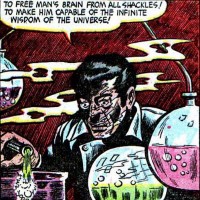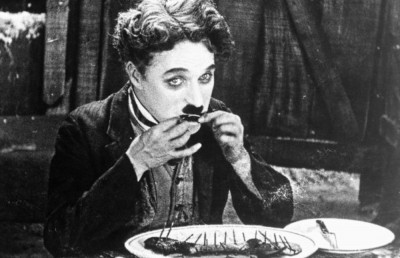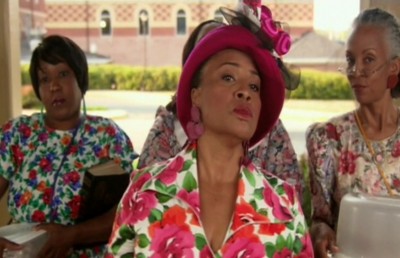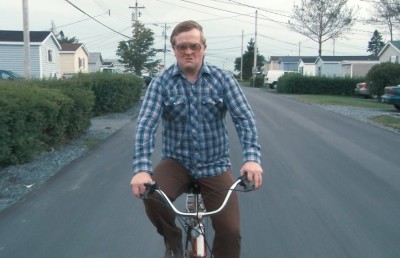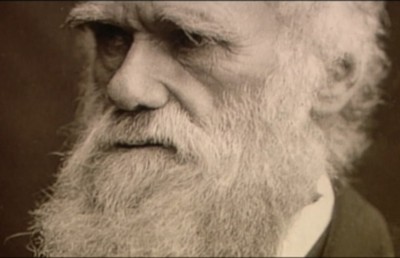Documentary Reality and Comedy
From Moore to Mahr
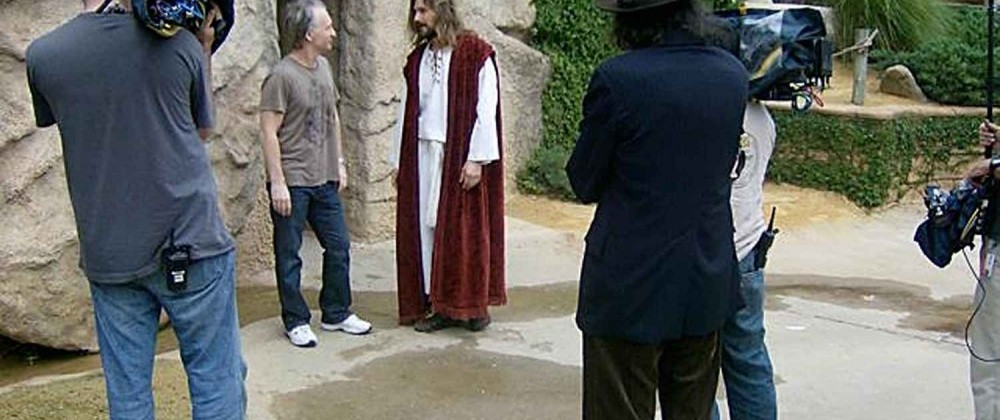
Typically, documentary and comedy occupy different spheres of the media environment. Comedy is perhaps the broadest genre of film generating large audiences and profits, yet is also associated with “lightness,” “fluff,” and “escapism.” Documentary, on the other hand, is a genre with more serious connotations often with associations to “evidence” and “politics.” However, many of the recent successful documentaries could be described as comedies or documentaries with many funny moments. These newer documentaries lend themselves to comedy by creating a distance between their subjects and audience, and by depicting their subjects as bizarre.
Writers on comedy have attempted definitions but often fail with theories that are either so specific that they exclude some comedies (e.g. saying that comedy creates a sense of superiority) or so broad that they include non comedies (e.g. saying comedy can be defined by its plot structure) (Mast 4-9, Horton 1-2). Gerald Mast attempts to understand comedy through his notion of “comic climate”: “signs an artist builds…into the work to let us know it is a comedy” (Mast 9 -12). Even though Mast attempts to analyze comedy from plot structure early on in his book The Comic Mind, his more semiologoical way of thinking seems to be more useful: the possibility to understand how a documentary can be comedic by the way it weaves in comic signs. Since comedy assumes a wide variety of forms, Geoff King believes that the best way to understand comedy is as a “mode” rather than a “genre” (King 2). King believes that comedic elements often exist in non-comedy genre films. Horror, drama, action, romance, and documentary can all contain comedic elements. According to King when comedy is an element in a film, it can be thought of as an “adjective” (as in “comedy westerns” like John Ford’s The Searchers); and when it is a “relatively more solid object of a genre” it is more like a “noun” (as in “romantic comedy”) (3). Perhaps films that are primarily documentaries but have comic elements can be called “comedic documentaries.”
An interesting fusion occurs between documentary and comedy. Documentary, even in its most subjective form, is connected to reality while comedy deals inherently with artifice and craft (though not without its own truth quotient). From a psychoanalytic perspective Martin Grotjahn believes that laughter comes from the release of suppressed “reality” (Grotjahn 529), energy (unfulfilled sexual desires, etc.) so that we can cope in the world (Grotjahn 523 -529). In this model “reality” is linked with negative emotions such as “guilt, fear, or anxiety” (529). This claim is also made by other theorists. Steve Neale and Frank Krutnick link reality with “low” or “inferior” characters and stratums of life (Neale and Krutnick 3). For these writers comedy’s strength lies in the “transgression”(87) of reality and cultural norms. This theory explains why cartoons lend themselves so well to comedy as they are “unhampered…by the laws of gravity” and hence capable of making light of the very basics of existence (90). In fact “direct address and references to the fiction as fiction” (reflexive techniques) are often comedic ploys to transgress even the medium of the film (90). Raymond Durgnat sees comedy as “exaggeration” that is constantly reassuring us “that it’s all unreal” (20). If comedy is concerned with toying with reality it makes sense that the perfect canvas for a comic artist to work on would be one with many claims to reality: the documentary. The more serious (or real) something is, the easier it is to construct jokes around it.
Stella Bruzzi’s understanding of documentary can be useful here. For Bruzzi the main defining feature of any documentary exists at the “juncture between reality and filmmaker” (Bruzzi 6) or “the collision between apparatus and subject” (7). Because the filmmaker skillfully uses his or her voice to analyze, select, and represent the world, Bruzzi writes that documentary is “at heart a performance” (154). Bruzzi then distinguishes the general performative aspect of all documentaries with a specific type that she labels “performative documentary”. A performative documentary “acknowledges the construction and artificiality” (154) of the film without making the represented reality “invalid”(4). Bruzzi’s type of performative documentary are those where the storyteller is simply saying “this is the way I see it” or “this is from my perspective, but I can’t be sure”. This subjective aesthetic, while it gives credibility to the author, may not always result in truth. When the magician shows you there is nothing in his pockets it does not mean the magic is real. And perhaps the overt presence of the author is not necessary, since at some level most of us realize that all voices are reflective of a point of view or perspective. In comedy, for example, that the tone of the piece takes the film out of an objective universe and into the realm of subjectivity and hence draws attention to the author. In watching comedic documentaries the filmmaker does not have to be on screen in order for the viewer to sense their presence.
Bruzzi’s emphasis on the performance of the filmmaker accurately describes how a documentary can be funny. In a comedic documentary the filmmaker’s use of characters and footage makes him or her, in a sense, the comic performer. If there is a current trend towards performative documentary (with Michael Moore style films) then it is understandable that comedic elements will also arrive with these new documentaries.
I think there are a couple of elements at play here; on one hand the Hollywood system wants to encourage money making entertainment and so comedy is a way to ensure this (e.g. March of The Penguins, The King of Kong, Comedian); on the other hand, there are a slew of social problems to deal with and documentary humor can serve as a social coping mechanism, a form of collective psychoanalysis (e.g. Religulous, Fahrenheit 911, Super Size Me). Bruzzi gives the example of Michael Moore’s Roger and Me (one of the highest grossing documentaries of all time) who through his narration and on camera performance highlights his presence and influence on the documentary eye (Bruzzi 176) and hence falls into her Performative documentary category. Because Moore does not hide his presence (or point of view) it is easy for him to write in jokes about Roger Moore and gun toting hillbillies – something an omnipotent, rational objective god-like narrator could never do. The same is true for other films like Bill Maher’s Religulous and McElwee’s Sherman’s March. These films all have strong comedic tones generated by the author’s personality and comments about situations. It is interesting that these documentaries that are so performative are also some of the major examples of comedy in the documentary genre.
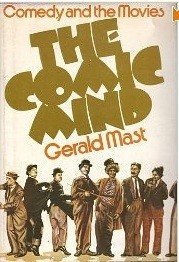
As mentioned above, Mast’s “comic climate” explains why comedy is often associated with tragedy (The Three Stooges beating each other up, Woody Allen’s psychic torment, etc.). It is a way for audiences to cope with the horrors of life, but at a safe distance. “Comic film,” writes Mast, “detaches the emotion of the spectator from the illusion of the work leaving the intellect free to the issues of the work” (18). This thought comes to Bruzzi’s definition of performance as an “alienating, distancing device” (Bruzzi 153). Mast lists a variety of semiotic devices to create this climate (titles, characters, subject matter) but the overall effect of these is to transform serious life and death material into something “worthless” (9) or light in order that the filmmaker may use it as comic fodder to toy with our collective heads. This seems to be true in many cases, take for example Larry Charles and Bill Maher’s Religulous. Religion is at the core of the psychic makeup of many people, with the belief that living a good life will ensure one gets to heaven. Maher (originally a stand up comic) manages to take this widely and longly-held sacred belief throughout the ages and turn it into one quick witticism, “it’s like playing the lotto…you can’t get saved if you don’t play.” The treating of real people’s opinions (sometimes powerful people) as worthless or silly is what drives this film at all its semiotic levels. Charles and Maher further alienate and distance religion in a variety of ways: by deciding to conduct an interview in a truck stop church made from a tiny trailer; by playing rap music and showing pictures of women in sexual poses overtop a Puerto Rican man who thinks he Jesus; and by continually displaying comical pop culture movie clips inserted in interviews. All of these instances, and more, work to link Religion with culturally perceived low-value objects (the title of the film literally transforming Religion into Ridiculous). But the film’s comedic content is linked to reality: people are really doing the things represented, at least in some capacity and it is not always funny. Just before the end credit Maher drops the comic climate and simply ends by saying that if the world does not evolve past religion there is a real chance of nuclear holocaust. “Grow up or die,” says the comedian in a serious tone that marks his unwillingness to relieve Grotjahn’s psychoanalytic anxiety –some things have to be worked out for real.
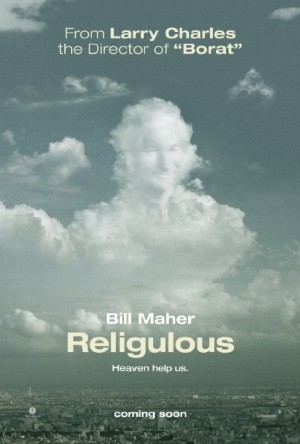
While the filmmaker seems to be the one doing the real performance, in documentary on many occasions it is the subjects themselves that become comedic characters (none more so than in the documentary on a singular timeless gag, featuring comedians themselves, The Aristocrats, 2008). Jill Godmilow believes that since the 1960s the documentary has shifted away from “critical or political thinking” to become more “untroubled,” and “sensational” (Godmilow 4). By not critically analyzing their relationship to the real Godmilow thinks recent documentary filmmakers have at times created a “pornography of real” (not to be confused with reality porn) (4). Many of the recent comedic documentaries seem to fit or fall close to this critique made by Godmilow. By treating documentary “subjects’ as “objects” (4) (we might say from people to characters) many documentary films disregard those they are representing and make sellable fools for mass audiences. Godmilow is afraid that by representing the fringes of society these type of documentaries are creating “freak shows” of different varieties of marginality while at the same time letting audiences feel, “thank god its not me” (4). This is remarkably similar to the comic creation of distance discussed by Mast. By exaggerating their marginal qualities (criminal, fool, old man, crazy person) these people become harder to identify with and easier to laugh at.
Seth Gordon’s 2007 The King of Kong shows Steve Weibe’s attempt to beat the world record at the arcade game Donkey Kong despite the many setbacks and counter challenges he encounters through current record holder Billy Mitchell and his loyal followers who control the official videogame score keeping organization, Twin Galaxies. The filmmakers are not really present in the documentary (except in more accidental moments) however we are aware of their presence as every interview has the subjects talking slightly off to the side. By the end of the film we realize that certain relationships with the filmmaker have occurred by the way people address the camera and the fact that the comic tone of the film seems to enhance the subjectivity. Much of the comedy in this film is simply generated by showing how serious some people take video games (that something associated with childhood and fun is taken so seriously by grown adults). This film could easily be seen as making a type of objectification (Godmilow’s “pornography”) out of the gamers. One example is Gordon’s portrayal of Twin Galaxies’ “head referee” Robert Mruczek as, in my own interpretation, a really weird guy. Mruczek is presented as someone with no job, who lives in a messy, stained-floor apartment and who has the passion to watch a single video game world record attempt for forty-eight hours to ensure that “Dwayne Richard’s two day Nibbler Performance” does not contain cheating. But as Mast says, good comedies show and don’t tell (Mast 23) and Gordon presents Mruczek behind a fence looking like Frankenstein’s monster, pointing the camera at his messy apartment, or showing pictures of this overweight balding man lifting weights (making him look weak) to make his point. Is there really a point in documenting these gamers as evil and weird with all their strange idiosyncrasies exposed for the world? Do they gain from this documentary? The film sets these men up as both powerful (as those who control the gaming world) but ironically also socially weak (awkward nerds); while Steve Weibe comes off as likeable and heroic even though he shares many of their same character flaws. Steve Weibe, framed in another way, could simply be understood as an unemployed neglectful father who plays too many video games and whose mom thinks he might be autistic. I have to admit I actually find the film funny but a more critical analysis reveals that I may be doing so at the expense of those in it.
Perhaps Godmilow’s greatest nightmare is the film Borat (perhaps not-so-coincidently produced by Larry Charles, producer of Religulous). It would be insulting to suggest that Borat is a documentary, nevertheless this comedy puts Sasha Cohen in real life situations with “real” Americans (real in the sense of Neal and Krutnick’s “lowly”) and by the end of the film we are exposed to some twisted ideas about the real nature of the country – Cohen is documenting personality in a sort of comedic experiment. In the end this film looks like a documentary (it is a parody of Performance documentaries, perhaps a Performance mockumentary?) and serves the same purpose as a documentary (it gives us evidence and commentary on the world). This film is the epitome of Godmilow’s fears concerning documentary: it makes complete fools out of many of the people in the film. (There was a string of lawsuits that came out afterwards.) Cohen is taking the real world and more or less duping people for a laugh; however his film is just as funny as The King of Kong. But not all comedies that use bizarre characters are necessarily exploitive. Chris Smith’s 1999 documentary American Movie portrays the negative, idiosyncratic, alcoholic and basically loser aspects of struggling filmmaker Mark Borchardt and his strange friends and family that include a sad, barren old uncle and his stoner friend who continually stares vacantly into space. However, somehow Smith gets away with it, possibly because he also shows the underlying heroism and character strengths in his characters. Borchardt, for example, may be an alcoholic, but he knows he has a problem and for most of the film tries to overcome his character flaws – he willingly participates. At the end of the film what we are left with is a connection to life, in all its colors, and not easy laughs based on the failings of a few characters. To my mind, American Movie is the pinnacle of both documentary and comedy; I find it completely fascinating and much funnier than any of the films previously mentioned. This film gives hope to Godmilow’s fears.
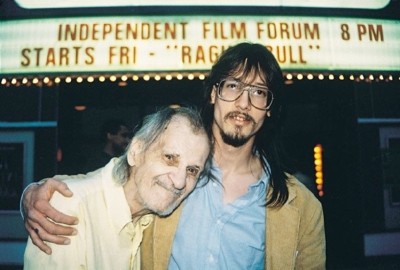
What I have attempted to do in this essay is discuss the core performative elements of documentary and how this helps us understand what it means to create comedy from a reality based film. As the anxieties of the world increase, the need to lighten up becomes greater. Hence it is quite probable, in continued troubled times, that comedy will continue to be a major part of mainstream documentary film.
Filmography
American Movie. Dir. Chris Smith (Ii). Perf. Mark Borchardt, Tom Schimmels, Monica Borchardt. DVD. Sony Pictures, 1999.
Borat – Cultural Learnings of America for Make Benefit Glorious Nation of Kazakhstan (Widescreen Edition). Dir. Larry Charles. Perf. Sasha Baron Cohen. DVD. 20th Century Fox, 2006.
Comedian. Dir. Christian Charles. Perf. Jerry Seinfeld, Chris Rock, Garry Shandling. DVD. Miramax, 2002.
Fahrenheit 9/11. Dir. Michael Moore. Perf. Michael Moore, George Bush. DVD. Weinstein Company, 2005.
Religulous. Dir. Larry Charles. Perf. Bill Maher, Steve Burg, Francis Collins. DVD. Lions Gate, 2008.
Roger & Me. Dir. Michael Moore. Perf. Michael Moore, Roger Smith. DVD. Warner Home Video, 1989.
Sherman’s March. Dir. Ross Mcelwee. Perf. Burt Reynolds, Charleen Swansea. DVD. First Run Features, 1986.
Super Size Me. Dir. Morgan Spurlock. Perf. Morgan Spurlock. DVD. Hart Sharp Video, 2004.
The King of Kong: A Fistful of Quarters. Dir. Seth Gordon. Perf. Billy Mitchell, Steve Wiebe. DVD. New Line Home Video, 2007.
Bibliography
Bruzzi, Stella. New Documentary. New York: Routledge, 2000.
Durgnat, Raymond. The Crazy Mirror. London: Faber, 1969.
Godmillow, Jill. “Kill the Documentary as We Know it.” The UFVA Journal of Film and Video, Vol. 54, Summer/Fall 2002. Pp 3 – 10.
Grotjahn, Martin. “Beyond Laugher” (excerpt). Theories of Comedy. ed. Paul Lauter. Anchor Books, New York, 1964.
Horton, Andrew. Comedy/Cinema/Theory. Berkeley: University of California Press, 1991.
King, Geoff. Film Comedy. City: Wallflower Press, 2002.
Mast, Gerald. The Comic Mind. Indianapolis: Bobbs-Merrill, 1973.
Neale, Stephen and Frank Krutnik. Popular Film and Television Comedy. New York: Routledge, 1990.

